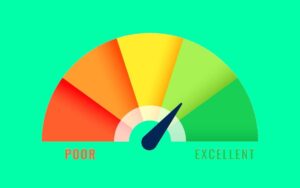
"Comparing savings accounts: Find the best option for your financial goals with the right mix of convenience, returns, and security." Image:wayhomestudio/FreePik
Opening a savings account is a smart financial move, but not all savings accounts are created equally. Choosing the right one depends on your financial goals, how much you can deposit initially, how soon you might need access to the funds, and your comfort level with technology. Let’s dive into the four main types of savings accounts, explore their features, and see which one suits your investment needs.
Key Takeaways
- Basic savings accounts offer low-risk, easy-to-use savings options but with lower returns.
- Online high-yield savings accounts provide higher interest rates for those comfortable with digital banking.
- Money market accounts deliver perks like tiered interest rates for higher balances.
- Certificates of Deposit (CDs) lock funds for a set period in exchange for fixed, often higher interest rates.
1. Basic Savings Account
A basic savings account, sometimes called a passbook account, is an excellent starting point for anyone new to saving money. Here’s what makes these accounts stand out:
Features and Benefits
- Simplicity: Basic savings accounts are straightforward to use and understand, making them a popular choice for beginner savers.
- Insured Funds: Deposits up to $250,000 are insured by the Federal Deposit Insurance Corporation (FDIC) for banks or the National Credit Union Administration (NCUA) for credit unions, ensuring peace of mind.
- Accessibility: Transactions are recorded in a passbook or through monthly account statements, and funds are easy to deposit and withdraw.
Drawbacks
- Lower Interest Rates: Because these accounts are so flexible, they typically offer lower returns compared to other savings options.
Who Should Choose This?
- Beginners just starting their savings journey.
- Parents teaching children the basics of saving money.
- Those who prioritize security and accessibility over high returns.
2. Online High-Yield Savings Account
For tech-savvy individuals who value convenience and higher interest rates, an online high-yield savings account might be the perfect fit.
Features and Benefits
- Higher Interest Rates: Since online banks have lower operating costs than traditional institutions, they can offer significantly higher yields.
- 24/7 Access: Manage your account anytime using mobile apps or websites.
- Secure Deposits: Funds up to $250,000 are insured by the FDIC or NCUA.
Drawbacks
- No Physical Branch Access: If you prefer in-person banking, these accounts might not be for you.
- ATM Limitations: Some online accounts limit ATM withdrawals, requiring extra planning if you need cash.
Who Should Choose This?
- Individuals comfortable with online banking and digital tools.
- Those seeking higher returns without locking away their funds.
- Investors looking for a modern, cost-effective savings option.
3. Money Market Savings Account
A money market account (MMA) blends features of both savings and checking accounts, making it an attractive choice for those with larger balances.
Features and Benefits
- Higher Interest Rates: Often, MMAs offer tiered rates, rewarding higher balances with better yields.
- Check-Writing Privileges: Some accounts allow limited check-writing or debit card access.
- Insurance: Like other savings accounts, funds up to $250,000 are insured by the FDIC or NCUA.
Drawbacks
- Higher Minimum Balance Requirements: Maintaining a specific balance is often necessary to avoid fees or qualify for the best rates.
- Potential Restrictions: Limited withdrawals per month may apply, making these accounts less flexible than basic savings options.
Who Should Choose This?
- Investors with larger balances who want better returns than a basic savings account can provide.
- Savers with medium-term financial goals, such as buying a car or funding a vacation.
- Those comfortable with maintaining minimum balance requirements.
4. Certificate of Deposit (CD) AccountFor savers who can set aside money without needing immediate access, certificates of deposit (CDs) are an excellent choice.
Features and Benefits
- Fixed Interest Rates: CDs typically offer higher rates than regular savings accounts, especially for longer terms.
- Predictable Returns: You’ll know exactly how much interest you’ll earn by the end of the term.
- Insurance: Like other accounts, CDs are insured up to $250,000 by the FDIC or NCUA.
Drawbacks
- Limited Flexibility: Accessing funds before the term ends often incurs penalties.
- Rate Lock-In: If interest rates rise, you’re stuck with the initial rate until the CD matures.
Who Should Choose This?
- Individuals saving for a defined goal with a clear timeline, such as a home down payment or a wedding.
- Investors seeking higher, guaranteed returns without taking significant risks.
- Savers who can comfortably lock away funds for a few months or years.
Pro Tips for Maximizing Your Savings
- Combine Account Types: Use a basic savings account for emergency funds, an online account for short-term goals, and a CD for long-term plans.
- Shop Around: Compare rates and features from multiple institutions to find the best fit for your needs.
- Automate Your Savings: Set up automatic transfers to ensure consistent saving without extra effort.
Common Questions About Savings Accounts
What Is a Certificate of Deposit (CD)?
A CD is a savings account that locks in your money for a specified term in exchange for a fixed interest rate, often higher than traditional accounts.
What Is the Average Savings Account Yield?
According to the FDIC, the average savings account yield is approximately 0.45%, although online accounts and CDs may offer higher rates.
How Much Money Is Insured in a Savings Account?
Savings deposits are insured by the FDIC or NCUA for amounts up to $250,000 per depositor, per institution.
The Bottom Line
When it comes to savings accounts, there’s no one-size-fits-all solution. Whether you’re just starting your savings journey, seeking higher returns, or saving for a long-term goal, understanding the differences between these account types can help you make the best decision for your financial future. Take the time to evaluate your goals, timeline, and comfort level with technology to find the account that aligns with your needs.





